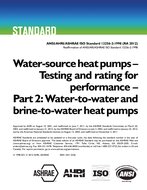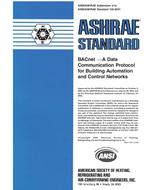Click here to purchase
This article describes the 2018 update version of the PHIUS+ passive building standard. The focus is on the the cost-optimization-based process used to set the heating and cooling performance requirements – criteria that drive the use of passive measures and result in “low load” building designs. Compliance with the standard is based mainly on modeled performance – while there are prescriptive minimums on component performance, there is not a fully prescriptive compliance path of the kind used in the model energy codes of North America. To avoid the known pitfalls of super-insulated buildings and ensure durability and a healthy indoor environment, additional requirements are imposed. The heating/cooling load limits were developed based life-cycle cost optimization under constraints. Optimization was done in BEopt, an EnergyPlus-based tool developed by the U.S. National Renewable Energy Lab (NREL). A variety of building sizes and occupant densities were simulated in numerous climates, optimizing for the maximum source energy savings at the minimum cost point (up-front and operational costs considered). The result is passive building performance criteria that vary based on climate, energy price, building occupant density, and size (envelope to floor area ratio). Importantly, although the study is used to set the heating/cooling performance criteria that mostly relate to the passive measures, those passive measures are judged on their contribution to energy savings overall, in interaction / competition with equipment efficiency measures, such as heat pump water heaters. In addition to the heating/cooling criteria, the standard also has a performance limit on overall source energy use. That limit is not derived from economics but rather from the idea of an equal share of the IPCC-determined global CO2 emission budget consistent with a 67% chance of limiting global warming to 2C. The residential limit is per-person, and the non-residential limit is floor-area-based. This annual net source energy target can be met with a combination of conservation measures, on-site renewables, and off-site renewables. This target is on a glide-path to 0 by 2030. PHIUS+ 2018 is designed to guide high-performance and net-zero-energy building design, favoring passive measures, to an economically feasible point, with considerable nuance. Improvement opportunities for the future are mentioned at the end.
Citation: Thermal Buildings XIV 2019
Product Details
- Published:
- 2019
- Number of Pages:
- 11
- Units of Measure:
- Dual
- File Size:
- 1 file , 1.6 MB
- Product Code(s):
- D-Bldgs19-044


